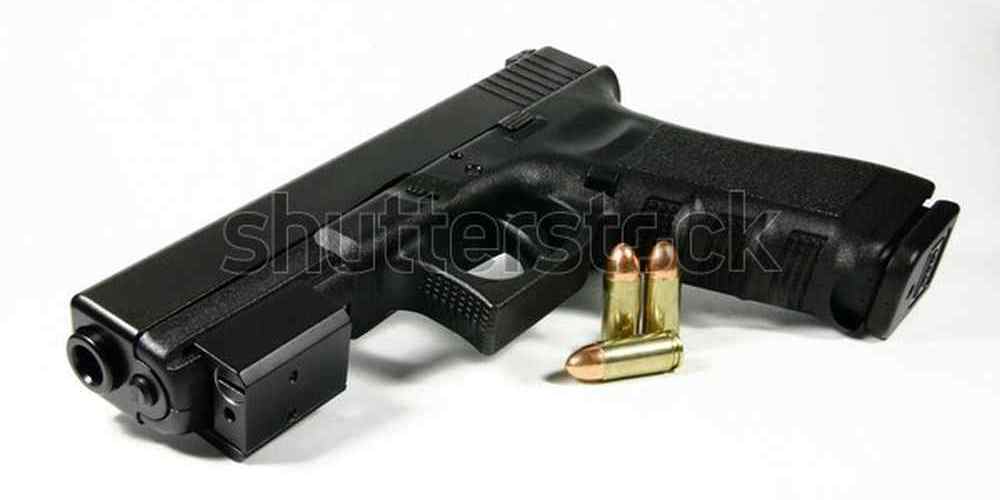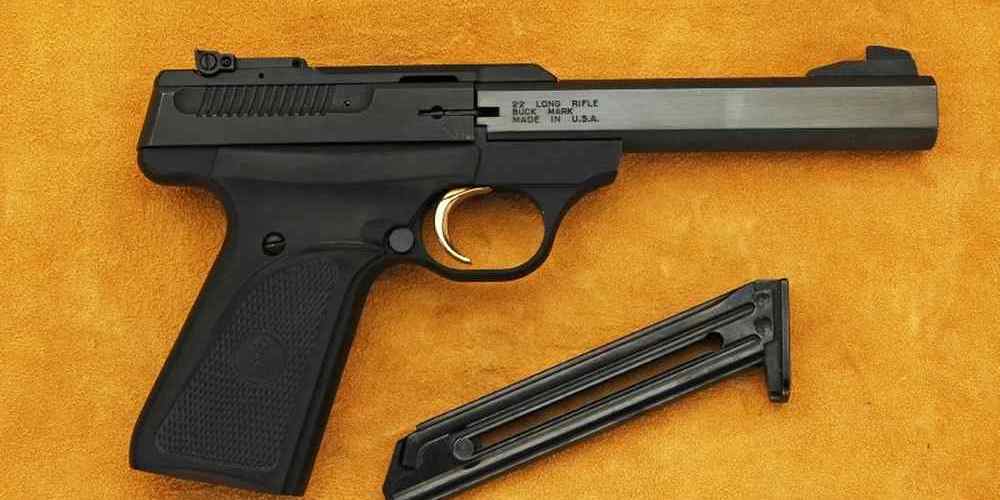“Troubleshooting made easy: Fix common issues with your semi-auto pistol.”
Clearing a Jammed Slide
Semi-automatic pistols are popular firearms due to their ease of use and reliability. However, like any mechanical device, they can experience issues from time to time. One common problem that shooters may encounter with semi-auto pistols is a jammed slide. This can be frustrating, but with a little know-how, you can quickly troubleshoot and resolve the issue.
When a slide becomes jammed on a semi-auto pistol, it can be caused by a variety of factors. One of the most common reasons for a jammed slide is improper maintenance or lack of lubrication. Over time, dirt, debris, and residue can build up in the slide and cause it to stick. Additionally, if the pistol is not properly lubricated, the slide may not move smoothly, leading to a jam.
To troubleshoot a jammed slide, the first step is to ensure that the pistol is unloaded. Remove the magazine and visually inspect the chamber to make sure there is no round in the chamber. Once you have confirmed that the pistol is unloaded, you can begin to troubleshoot the jammed slide.
The next step is to check for any obstructions in the slide. Inspect the slide for any dirt, debris, or residue that may be causing it to stick. If you see any buildup, use a clean cloth to wipe down the slide and remove any obstructions. Additionally, check the rails on the frame of the pistol for any debris that may be causing the slide to jam.
If the slide is still jammed after cleaning, the next step is to check the recoil spring. The recoil spring is responsible for absorbing the recoil of the pistol and returning the slide to its forward position. If the recoil spring is damaged or worn out, it may cause the slide to jam. Inspect the recoil spring for any signs of damage or wear, and if necessary, replace it with a new one.
Another common cause of a jammed slide is an improperly seated magazine. If the magazine is not fully inserted into the pistol, it can cause the slide to jam. To troubleshoot this issue, remove the magazine and reinsert it into the pistol, making sure it is fully seated. Once the magazine is properly inserted, rack the slide to see if the issue has been resolved.
If none of these troubleshooting steps resolve the issue, it may be necessary to disassemble the pistol for further inspection. Refer to the manufacturer’s instructions for disassembling the pistol and inspect the internal components for any damage or wear. If you are not comfortable disassembling the pistol yourself, it is recommended to take it to a qualified gunsmith for further inspection and repair.
In conclusion, a jammed slide on a semi-auto pistol can be a frustrating issue, but with a little troubleshooting, you can quickly resolve the issue. By checking for obstructions, inspecting the recoil spring, and ensuring the magazine is properly seated, you can troubleshoot and resolve common issues with a jammed slide. If the issue persists, it may be necessary to disassemble the pistol for further inspection or take it to a qualified gunsmith for repair. With proper maintenance and care, you can keep your semi-auto pistol running smoothly and reliably for years to come.

Addressing Failure to Feed Issues
Semi-automatic pistols are popular firearms due to their ease of use and reliability. However, like any mechanical device, they can experience issues from time to time. One common problem that shooters may encounter with semi-auto pistols is failure to feed issues. This occurs when the pistol fails to load a new round into the chamber after firing. Fortunately, there are several steps you can take to troubleshoot and resolve this issue.
The first thing to check when experiencing failure to feed issues is the magazine. Make sure the magazine is properly seated in the pistol and that it is loaded correctly. Sometimes, the spring tension in the magazine may be weak, causing feeding problems. Try using a different magazine to see if the issue persists. If the problem continues, it may be due to the ammunition itself. Make sure you are using high-quality, factory-made ammunition that is appropriate for your pistol.
Another common cause of failure to feed issues is a dirty or dry pistol. Over time, dirt, debris, and fouling can build up in the pistol’s action, causing malfunctions. Regular cleaning and lubrication of your pistol can help prevent these issues. Make sure to clean the barrel, slide, and magazine well thoroughly, and apply a light coat of gun oil to ensure smooth operation.
If cleaning and lubrication do not resolve the issue, the problem may be related to the pistol’s recoil spring. The recoil spring is responsible for absorbing the energy of the fired round and cycling the slide to load a new round. If the recoil spring is worn out or damaged, it may not have enough tension to cycle the slide properly. In this case, you may need to replace the recoil spring with a new one to resolve the issue.
In some cases, failure to feed issues may be caused by a worn or damaged extractor. The extractor is responsible for gripping the rim of the cartridge and pulling it from the magazine into the chamber. If the extractor is worn or damaged, it may not be able to properly extract the round from the magazine, leading to feeding issues. Inspect the extractor for any signs of wear or damage, and replace it if necessary.
If none of these solutions resolve the failure to feed issues, it may be time to seek professional help. A gunsmith or firearms expert can inspect your pistol and diagnose any underlying issues that may be causing the problem. They can also perform any necessary repairs or adjustments to get your pistol back in working order.
In conclusion, failure to feed issues with semi-auto pistols can be frustrating, but they are often easily resolved with some basic troubleshooting steps. By checking the magazine, cleaning and lubricating your pistol, inspecting the recoil spring and extractor, and seeking professional help if needed, you can get your pistol back to reliable operation. Remember to always practice proper gun safety and maintenance to ensure the longevity and performance of your firearm.
Fixing Failure to Eject Problems
Semi-automatic pistols are popular firearms due to their ease of use and reliability. However, like any mechanical device, they can experience issues from time to time. One common problem that shooters may encounter with semi-auto pistols is failure to eject. This can be frustrating, but with a little troubleshooting, you can often fix the issue yourself.
When a semi-auto pistol fails to eject properly, it can result in a jammed firearm and potentially dangerous situations. The most common causes of failure to eject include weak ammunition, dirty or damaged extractor, improper grip, or a worn-out recoil spring. To diagnose the issue, start by checking the ammunition you are using. Make sure it is of good quality and not underpowered, as this can cause the slide to not cycle properly.
Next, inspect the extractor on your pistol. This small part is responsible for pulling the spent casing out of the chamber and ejecting it from the firearm. If the extractor is dirty or damaged, it may not be able to perform its function correctly. Clean the extractor and the area around it thoroughly, and if necessary, replace the extractor with a new one.
Another common cause of failure to eject is an improper grip on the pistol. Make sure you are holding the firearm firmly and allowing it to recoil properly. If you are limp-wristing or not providing enough resistance to the recoil, the slide may not cycle fully, causing ejection issues. Practice your grip and stance to ensure you are providing the necessary support for the pistol to function correctly.
Lastly, a worn-out recoil spring can also lead to failure to eject problems. The recoil spring is responsible for absorbing the energy of the fired round and returning the slide to its forward position. If the recoil spring is worn out or damaged, it may not be able to provide enough force to cycle the slide properly. Replace the recoil spring with a new one to see if this resolves the ejection issues.
In conclusion, failure to eject problems with semi-auto pistols can be frustrating, but they are often easily fixable with a little troubleshooting. Check your ammunition, inspect the extractor, ensure a proper grip, and replace the recoil spring if necessary. By addressing these common issues, you can keep your semi-auto pistol functioning reliably and safely. Remember to always follow proper firearm safety protocols and consult a professional gunsmith if you are unsure about making any repairs yourself. With a little care and maintenance, your semi-auto pistol will continue to serve you well for years to come.
Resolving Magazine Malfunctions
Semi-automatic pistols are popular firearms due to their ease of use and reliability. However, like any mechanical device, they can experience malfunctions from time to time. One common issue that shooters may encounter with semi-auto pistols is magazine malfunctions. These can be frustrating, but with a little troubleshooting, they can usually be resolved quickly and easily.
One of the most common magazine malfunctions is failure to feed. This occurs when the pistol fails to pick up a round from the magazine and chamber it into the firing position. This can be caused by a variety of factors, including a dirty or damaged magazine, weak magazine spring, or improper ammunition. To troubleshoot this issue, start by checking the magazine for any dirt, debris, or damage. Clean the magazine thoroughly and inspect it for any signs of wear or damage. If the magazine appears to be in good condition, try using a different magazine to see if the issue persists. If the problem continues, it may be a good idea to try using a different brand or type of ammunition to see if that resolves the issue.
Another common magazine malfunction is failure to lock back. This occurs when the slide fails to lock back after the last round has been fired. This can be caused by a variety of factors, including a worn or damaged slide stop, weak magazine spring, or improper grip on the pistol. To troubleshoot this issue, start by checking the slide stop for any signs of wear or damage. If the slide stop appears to be in good condition, try using a different magazine to see if the issue persists. If the problem continues, it may be a good idea to have a gunsmith inspect the pistol for any potential issues.
One final common magazine malfunction is failure to eject. This occurs when the spent casing fails to eject from the pistol after firing. This can be caused by a variety of factors, including a dirty or damaged extractor, weak magazine spring, or improper grip on the pistol. To troubleshoot this issue, start by checking the extractor for any dirt, debris, or damage. Clean the extractor thoroughly and inspect it for any signs of wear or damage. If the extractor appears to be in good condition, try using a different magazine to see if the issue persists. If the problem continues, it may be a good idea to have a gunsmith inspect the pistol for any potential issues.
In conclusion, magazine malfunctions are a common issue that shooters may encounter with semi-auto pistols. By following these troubleshooting tips, you can quickly and easily resolve most magazine malfunctions and get back to enjoying your time at the range. Remember to always practice proper firearm safety and never hesitate to seek professional help if you are unsure how to resolve a malfunction. With a little patience and know-how, you can keep your semi-auto pistol running smoothly for years to come.
Troubleshooting Accuracy and Recoil Control Issues
Semi-automatic pistols are popular firearms for both self-defense and recreational shooting. However, like any mechanical device, they can sometimes experience issues that affect their accuracy and recoil control. In this article, we will discuss some common problems that shooters may encounter with semi-auto pistols and provide tips on how to troubleshoot and resolve them.
One of the most common accuracy issues with semi-auto pistols is a misaligned sight. If your shots are consistently off target, the first thing you should check is the alignment of your sights. Make sure that the front and rear sights are properly aligned and that the sight picture is clear. If the sights are misaligned, you may need to adjust them using the appropriate tools or seek the assistance of a professional gunsmith.
Another common accuracy issue is a loose grip. A loose grip can cause the pistol to move during firing, resulting in inconsistent shot placement. To improve your grip, make sure that you are holding the pistol firmly with both hands and that your wrists are locked. Practice proper grip technique and experiment with different hand positions to find what works best for you.
Recoil control is another important aspect of shooting a semi-auto pistol accurately. If you are having trouble managing recoil, there are a few things you can try. First, make sure that you are using the correct grip technique and stance. A proper grip and stance can help absorb recoil and keep the pistol stable during firing.
Additionally, you may want to consider using a heavier recoil spring or a muzzle brake to reduce felt recoil. These accessories can help mitigate the effects of recoil and improve your shooting accuracy. Experiment with different recoil control devices to find what works best for you and your shooting style.
If you are still experiencing accuracy and recoil control issues with your semi-auto pistol, it may be time to inspect the firearm for mechanical problems. Check the barrel, slide, and frame for any signs of wear or damage. Make sure that all components are properly lubricated and functioning correctly.
If you are unable to identify the source of the problem, it may be best to seek the assistance of a professional gunsmith. A gunsmith can inspect your pistol, diagnose any issues, and make the necessary repairs to ensure that your firearm is functioning properly.
In conclusion, troubleshooting accuracy and recoil control issues with semi-auto pistols requires a combination of proper technique, equipment, and maintenance. By following the tips outlined in this article, you can improve your shooting accuracy and control recoil more effectively. Remember to practice regularly and seek professional help if you are unable to resolve the issues on your own. With patience and persistence, you can overcome common problems with semi-auto pistols and become a more accurate and confident shooter.




